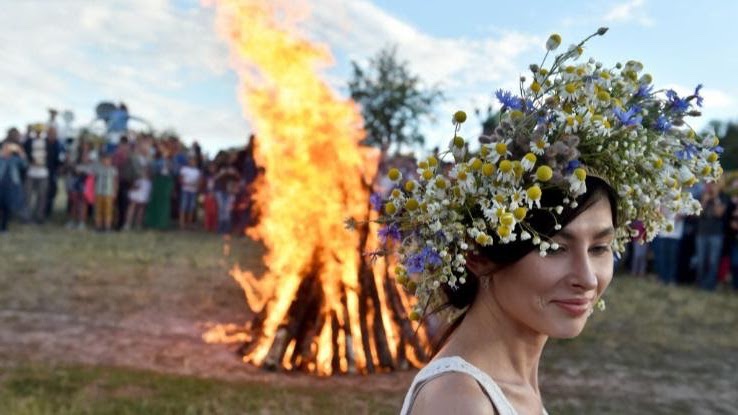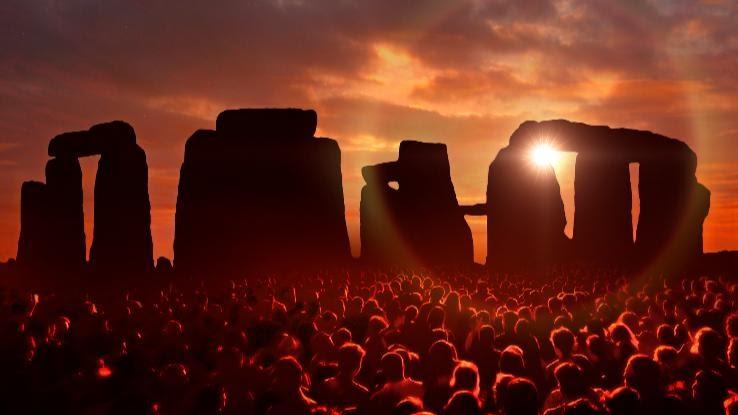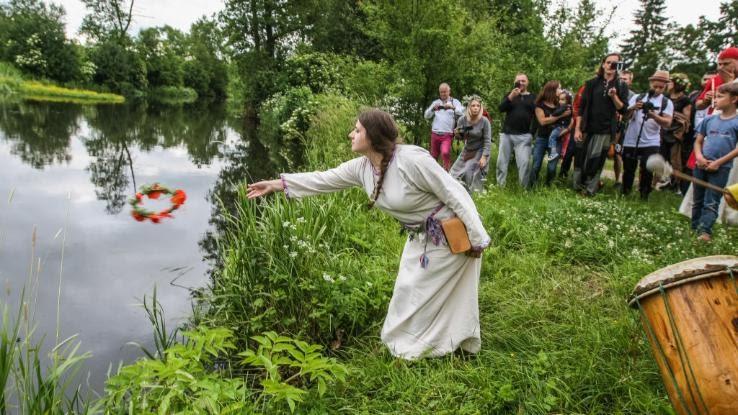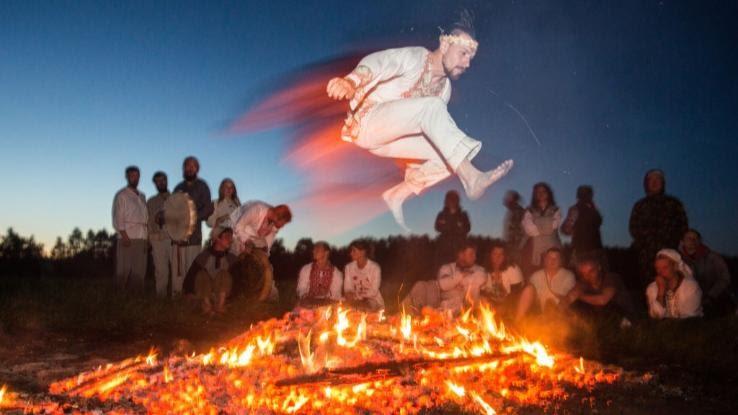
What do Stonehenge, a mysterious arboreal royal known as the Oak King and communal bonfires have in common? They’re all important elements of legends surrounding the summer solstice, which is the longest day of the year. Throughout history, Midsummer — an ancient celebration marking the solstice when one of Earth’s poles is tilted closest to the sun — has been celebrated across various cultures throughout the world, inspiring countless legends, rituals and festivities that are surprisingly entertaining and educational.
Evidence of humanity’s celebration of the summer solstice can be seen in everything from Shakespeare’s A Midsummer Night’s Dream to the exacting construction of certain ancient monuments. Join us for a look at the traditions that summer solstice has inspired over the centuries, some of which live on to this day.
The Solstice-Stonehenge Connection: How Ancient Monuments Mark Midsummer
As it turns out, humanity’s fascination with Midsummer is a phenomenon that’s endured for centuries longer than many of us might think. The summer solstice was an important occasion for ancient civilizations because it marked the point of the year when the sun reversed its northward movement across the sky and began heading southwards, kicking off the countdown to autumn.
The summer solstice also held significance because it was a prominent visual marker that helped ancient people determine when to plant certain crops. This held key implications for farmers, who counted on the harmony of sun and water for a successful growing season. Although archaeologists and anthropologists still have questions about their true purposes, some famous ancient monuments are thought to have helped different societies mark and celebrate summer solstice and determine the best planting times. Today, we can still visit several of these monuments that measure the arrival of Midsummer.

Among the most mysterious of all ancient sites, archeologists are still unsure exactly why Stonehenge was built — let alone how. Among the most famous prehistoric sites in the world, Stonehenge was likely built over the course of several thousand years. The construction of its famous stone circle is believed to have begun around 2500 B.C.
Located near Wiltshire, England, Stonehenge draws crowds each year on Midsummer as spectators watch the sun rise over the monument’s Heel Stone. It’s constructed so the sun on the summer solstice is positioned directly between two support structures and shines directly into the center of the monument. Even if you don’t happen to be near England, you can still watch the annual event unfold via a live Facebook stream.
Midsummer was definitely not lost on the solar-studying Mayan civilization, who built the awe-inspiring Pyramid of Chichén Itzá in Yucatán, Mexico. Constructed between 800 and 900 C.E., the pyramid was dedicated to the feathered serpent god Kukulcan (or Quetzalcoatl). Each year on the spring and autumn equinoxes, the pyramid’s construction creates an optical illusion of a serpent crawling up and down its sides due to the play of light and shadows.
On the summer solstice, the pyramid’s northern and eastern sides are illuminated in light, while its opposite sides are covered completely in shadow. This gives the illusion that the pyramid is perfectly divided into two halves.
Midsummer Inspired Legends and Lore Throughout History
It’s no surprise that many ancient legends sprang up around Midsummer, when the sun began its yearly decline towards colder days of autumn. In ancient England, the winter solstice marked the yearly return of the Oak King, who ruled over the skies as the sun rose to its highest position. The Oak King ruled over the forces of light, vitality and warmth, ushering in the return of warmer days after the darkness of winter.
The summer solstice, however, marked the return of the Oak King’s brother, the Holly King. Crowned with a wreath of holly (and believed by some to be an early inspiration behind Santa Claus), the Holly King shepherded in the days of the waning sun and the slow but steady seasonal shift towards cold, darkness and hibernation.

Legend also had it that Midsummer’s Eve was a “spirit night,” one of the times of the year when the boundary between our world and the spirit world was at its thinnest. It was a time when spirits, witches and other supernatural creatures roamed the night, making men vulnerable to the sort of fairy tricks Shakespeare wrote about in A Midsummer Night’s Dream.
This kind of supernatural trickery was blamed for what’s come to be known as “Midsummer madness,” a term that refers to eccentric or questionable behavior or choices people engaged in when they started spending more time outdoors in the sunlight. It’s more likely that such behavior was actually due to a combination of heat and stress over the fact that the sun beginning to wane could have a huge effect on yearly crops. Luckily, many cultures developed a number of rituals to keep themselves protected during this time, some of which are still enacted today.
Midsummer Rituals Are Still Celebrated Today
Due to the importance of Midsummer in regards to the farming calendar, many Midsummer rituals involved both fire and water, the essential elements for a successful crop. This was especially true in Northern Europe, where the growing season is among the shortest in the world.
In many parts of Europe, people lit both communal bonfires and personal fires at home to purify the environment from evil spirits and bless their farmlands and cattle. The smoke from the fires also served as a form of sympathetic magic that was meant to encourage the sun to continue to shine its brightest for as long as it could manage. Jumping over fires several times, both forward and backward, also became a common tradition that was said to bestow luck on the jumpers.

Another common European summer solstice festival involved lighting a huge wheel or barrel on fire and rolling it down a hill into water. The wheel was meant to symbolize both the sun and the cycle of the seasons of the year. It was said to be bad luck if the wheel didn’t make it to the bottom of the hill before its fire died out, as it could be an indication of an unsuccessful harvest to come.
Midsummer was also an important time for young people, especially when it came to love. Young women often gathered flowers and wove them into headbands or gathered herbs that were said to be at their most potent on Midsummer. In Sweden, unmarried women placed flowers beneath their pillows on Midsummer Night in hopes of dreaming of their future partners.
In countries across the world, it was also common for people to decorate lakes, rivers and wells with flowers. In Russia, unmarried women often sent entire wreaths of flowers (sometimes with candles set atop them) floating into a river or lake to try and foretell their romantic futures. Bathing in water was also a common way to secure luck and fortune for the coming year, especially for young people.
While the spread of Christianity eventually led many old Midsummer rituals to die out, they’re beginning to make comebacks today. Midsummer fires can still be seen burning across Europe each year as people celebrate the annual summer solstice just as their ancestors did.






